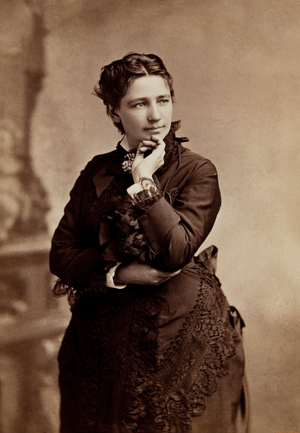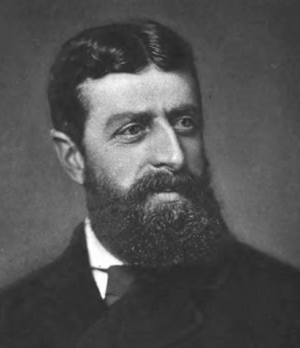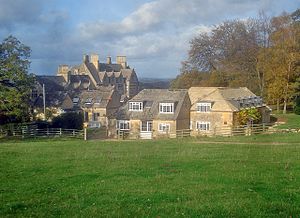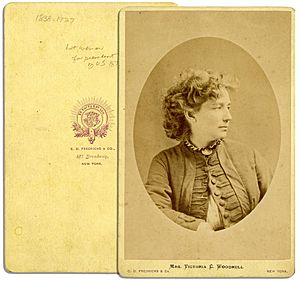Victoria Woodhull facts for kids
Quick facts for kids
Victoria Woodhull
|
|
|---|---|
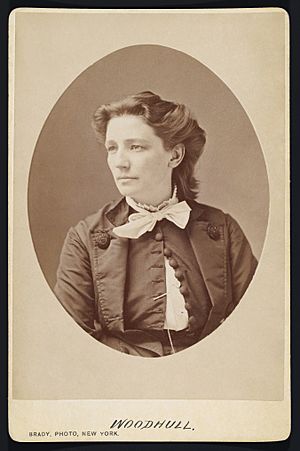 |
|
| Born |
Victoria California Claflin
September 23, 1838 Homer, Ohio, U.S.
|
| Died | June 9, 1927 (aged 88) Bredon's Norton, Worcestershire, England
|
| Occupation | Suffragist, politician, feminist, writer |
| Known for | Politics, women's rights, women's suffrage, feminism, civil rights, anti-slavery, stockbroker, journalism |
| Political party | Equal Rights |
| Spouse(s) |
Canning Woodhull
(m. 1853; div. 1865)John Biddulph Martin
(m. 1883; died 1897) |
| Children | 2 |
| Relatives | Tennessee Claflin (sister) See Claflin family |
| Signature | |
Victoria Claflin Woodhull, later Victoria Woodhull Martin (September 23, 1838 – June 9, 1927), was an American leader of the women's suffrage movement who ran for President of the United States in the 1872 election. While many historians and authors agree that Woodhull was the first woman to run for the presidency, some disagree with classifying it as a true candidacy because she was younger than the constitutionally mandated age of 35. (Woodhull's 35th birthday was in September 1873, six months after the March inauguration.) However, election coverage by contemporary newspapers does not suggest age was a significant issue; this may, however, be due to the fact that few took the candidacy seriously.
Woodhull twice went from rags to riches, her first fortune being made on the road as a magnetic healer before she joined the spiritualist movement in the 1870s. Authorship of many of her articles is disputed (many of her speeches on these topics were collaborations between Woodhull, her backers, and her second husband, Colonel James Blood). Together with her sister, Tennessee Claflin, she was the first woman to operate a brokerage firm on Wall Street, making a second, and more reputable fortune. They were among the first women to found a newspaper in the United States, Woodhull & Claflin's Weekly, which began publication in 1870.
Woodhull was politically active in the early 1870s when she was nominated as the first woman candidate for the United States presidency. Woodhull was the candidate in 1872 from the Equal Rights Party, supporting women's suffrage and equal rights; her running mate (unbeknownst to him) was abolitionist leader Frederick Douglass. Her campaign inspired at least one other woman – apart from her sister – to run for Congress.
Contents
Early life and education
Victoria California Claflin was born the seventh of ten children (six of whom survived to maturity), in the rural frontier town of Homer, Licking County, Ohio. Her mother, Mrs Roxanna "Roxy" Hummel Claflin, was born to unmarried parents and was illiterate. She had become a follower of the Austrian mystic Franz Mesmer and the new spiritualist movement. Her father, Reuben "Buck" Buckman Claflin, Esq., was a con man, lawyer and snake oil salesman. He came from an impoverished branch of the Massachusetts-based Scots-American Claflin family, semi-distant cousins to Massachusetts Governor William Claflin.
Woodhull believed in spiritualism – she referred to "Banquo's Ghost" from Shakespeare's Macbeth – because it gave her belief in a better life.
As they grew older, Victoria became close to her sister Tennessee Celeste Claflin (called Tennie), seven years her junior and the last child born to the family. As adults, they collaborated in founding a stock brokerage and newspaper in New York City.
By age 11, Woodhull had only three years of formal education, but her teachers found her to be extremely intelligent. She was forced to leave school and home with her family when her father, after having "insured it heavily," burned the family's rotting gristmill. When he tried to get compensated by insurance, his arson and fraud were discovered; he was run off by a group of town vigilantes. The town held a "benefit" to raise funds to pay for the rest of the family's departure from Ohio.
Marriages
First marriage and family
When she was 14, Victoria met 28-year-old Canning Woodhull (listed as "Channing" in some records), a doctor from a town outside Rochester, New York. Her family had consulted him to treat the girl for a chronic illness. Woodhull practiced medicine in Ohio at a time when the state did not require formal medical education and licensing. By some accounts, Woodhull abducted Victoria to marry her. Woodhull claimed to be the nephew of Caleb Smith Woodhull, mayor of New York City from 1849 to 1851; he was in fact a distant cousin.
They were married on November 20, 1853. Their marriage certificate was recorded in Cleveland on November 23, 1853, when Victoria was two months past her 15th birthday.
She and Canning had two children, Byron and Zulu (later called Zula) Maude Woodhull. Byron was born with an intellectual disability in 1854. After their children were born, Victoria divorced her husband and kept his surname.
Second marriage
About 1866, Woodhull married Colonel James Harvey Blood, who also was marrying for a second time. He had served in the Union Army in Missouri during the American Civil War, and had been elected as city auditor of St. Louis, Missouri.
Careers
Stockbroker
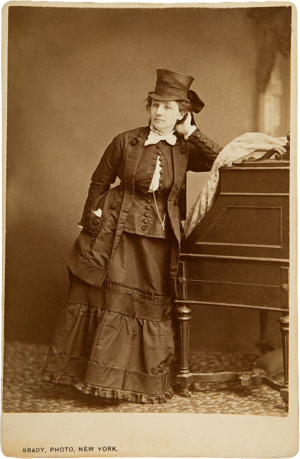
Woodhull, with sister Tennessee (Tennie) Claflin, became the first female stockbrokers and in 1870 they opened a brokerage firm on Wall Street. Wall Street brokers were shocked. "Petticoats Among the Bovine and Ursine Animals," the New York Sun headlined. Woodhull, Claflin & Company opened in 1870, with the assistance of the wealthy Cornelius Vanderbilt, an admirer of Woodhull's skills as a medium; he is rumoured to have been Tennie's lover, and to have seriously considered marrying her. Woodhull made a fortune on the New York Stock Exchange by advising clients like Vanderbilt. On one occasion she told him to sell his shares short for 150 cents per stock, which he duly followed, and earned millions on the deal. Newspapers such as the New York Herald hailed Woodhull and Claflin as "the Queens of Finance" and "the Bewitching Brokers."
Newspaper editor
On the date of May 14, 1870, Woodhull and Claflin used the money they had made from their brokerage to found a newspaper, the Woodhull & Claflin's Weekly, which at its height had a national circulation of 20,000. Its primary purpose was to support Victoria Claflin Woodhull for President of the United States. Published for the next six years, feminism was the Weekly's primary interest, but it became notorious for publishing controversial opinions on taboo topics, advocating among other things women's suffrage, short skirts, spiritualism, vegetarianism. James Blood and Stephen Pearl Andrews wrote the majority of the articles, as well as other able contributors.
George Francis Train once defended her. Other feminists of her time, including Susan B. Anthony, disagreed with her tactics in pushing for women's equality. Some characterized her as opportunistic and unpredictable; in one notable incident, she had a run-in with Anthony during a meeting of the National Women's Suffrage Association (NWSA). (The radical NWSA later merged with the conservative American Women's Suffrage Association [AWSA] to form the National American Woman Suffrage Association.)
Women's rights advocate
Woodhull learned how to infiltrate the all-male domain of national politics and arranged to testify on women's suffrage before the House Judiciary Committee. In December of 1870, she submitted a memorial in support of the New Departure to the House Committee. She read the memorial aloud to the Committee, arguing that women already had the right to vote – all they had to do was use it – since the 14th and 15th Amendments guaranteed the protection of that right for all citizens. The simple but powerful logic of her argument impressed some committee members. Learning of Woodhull's planned address, suffrage leaders postponed the opening of the 1871 National Woman Suffrage Association's third annual convention in Washington in order to attend the committee hearing. Susan B. Anthony, Elizabeth Cady Stanton, and Isabella Beecher Hooker, saw Woodhull as the newest champion of their cause. They applauded her statement: "[W]omen are the equals of men before the law, and are equal in all their rights."
With the power of her first public appearance as a woman's rights advocate, Woodhull moved to the leadership circle of the suffrage movement. Although her Constitutional argument was not original, she focused unprecedented public attention on suffrage. Woodhull was the second woman to petition Congress in person (the first was Elizabeth Cady Stanton). Numerous newspapers reported her appearance before Congress. Frank Leslie's Illustrated Newspaper printed a full-page engraving of Woodhull, surrounded by prominent suffragists, delivering her argument.
First International
Woodhull joined the International Workingmen's Association, also known as the First International. She supported its goals by articles in her newspaper. In the United States, many Yankee radicals, former abolitionists and other progressive activists, became involved in the organization, which had been founded in England. German-American and ethnic Irish nearly lost control of the organization, and feared its goals were going to be lost in the broad-based, democratic egalitarianism promoted by the Americans. In 1871, the Germans expelled most of the English-speaking members of the First International's U.S. sections, leading to the quick decline of the organization, as it failed to attract the ethnic working class in America. Karl Marx commented disparagingly on Woodhull in 1872, and expressed approval of the expulsions.
Recent scholarship has shown Woodhull to have been a far more significant presence in the socialist movement than previous historians had allowed. Woodhull thought of herself as a revolutionary and her conception of social and political reorganization was, like Marx, based upon economics. In an article titled "Woman Suffrage in the United States" in 1896, she concluded that "suffrage is only one phase of the larger question of women's emancipation. More important is the question of her social and economic position. Her financial independence underlies all the rest." Ellen Carol DuBois refers to her as a "socialist feminist."
Presidential candidate
On April 2, 1870, Woodhull's letter to the editor of the New York Herald was published, it announced her candidacy.
Woodhull was nominated for President of the United States by the newly formed Equal Rights Party on May 10, 1872, at Apollo Hall, New York City. A year earlier, she had announced her intention to run. Also in 1871, she publicly spoke out against the government only being composed of men; she proposed the development of a new constitution and the creation of a new government a year thence. Her nomination was ratified at the convention on June 6, 1872, making her the first woman candidate.
Woodhull's campaign was also notable because Frederick Douglass was nominated as a vice-presidential candidate, even though he did not take part in the convention, he did not acknowledge his nomination and he did not play any active role in the campaign. His nomination stirred up controversy about the mixing of whites and blacks in public life and fears of miscegenation. The Equal Rights Party hoped to use the nominations to reunite suffragists with African-American civil rights activists, because the exclusion of female suffrage from the Fifteenth Amendment two years earlier had caused a substantial rift between the groups
That same day, a few days before the presidential election, U.S. Federal Marshals arrested Woodhull; her second husband, Colonel James Blood; and her sister Tennie. The sisters were held in the Ludlow Street Jail for the next month, a place normally reserved for civil offenses but that contained more hardened criminals as well. The arrest was arranged by Anthony Comstock, the self-appointed moral defender of the nation at the time. Opponents raised questions about censorship and government persecution. The three were acquitted on a technicality six months later, but the arrest prevented Woodhull from attempting to vote during the 1872 presidential election. With the publication of the scandal, Theodore Tilton, Elizabeth's husband, sued Beecher for "alienation of affection." The later trial in 1875 was sensationalized across the nation and eventually resulted in a hung jury.
Woodhull received no electoral votes in the election of 1872, an election in which six different candidates received at least one electoral vote, and an unknown (but negligible) percentage of the popular vote. An unrelated man in Texas admitted to voting for her, saying he was casting his vote against Grant.
Woodhull again tried to gain nominations for the presidency in 1884 and 1892. Newspapers reported that her 1892 attempt culminated in her nomination by the "National Woman Suffragists' Nominating Convention" on September 21. Marietta L. B. Stow of California was nominated as the candidate for vice president. The convention was held at Willard's Hotel in Boonville, New York, and Anna M. Parker was its president. Some woman's suffrage organizations repudiated the nominations, however, claiming that the nominating committee was unauthorized. Woodhull was quoted as saying that she was "destined" by "prophecy" to be elected president of the United States in the upcoming election.
Life in England and third marriage
In October 1876, Woodhull divorced her second husband, Colonel Blood. After Cornelius Vanderbilt's death in 1877, William Henry Vanderbilt paid Woodhull and her sister Claflin $1,000 (equivalent to $27,000 in 2022 ) to leave the country because he was worried they might testify in hearings on the distribution of the elder Vanderbilt's estate. The sisters accepted the offer and moved to Great Britain in August 1877.
She made her first public appearance as a lecturer at St. James's Hall in London on December 4, 1877. Her lecture was called "The Human Body, the Temple of God," a lecture which she had previously presented in the United States. Present at one of her lectures was the banker John Biddulph Martin. They began to see each other and married on October 31, 1883. His family disapproved of the union.
From then on, she was known as Victoria Woodhull Martin. Under that name, she published the magazine The Humanitarian from 1892 to 1901 with help from her daughter, Zula Woodhull. Her husband John died in 1897. After 1901, Martin gave up publishing and retired to the country, establishing residence at Norton Park, Bredon's Norton, Worcestershire, where she built a village school with Tennessee and Zula. Through her work at the Bredon's Norton school, she became a champion for education reform in English village schools with the addition of kindergarten curriculum.
She was active in the pioneering days of female motorists, with the Ladies' Automobile Club, and was reputed to have been the first woman to drive a car in Hyde Park, London and in the English country roads.
Legacy and honors
A wall memorial to Victoria Woodhull Martin is located at Tewkesbury Abbey.
There is a historical marker which is located outside the Homer Public Library in Licking County, Ohio to mark Woodhull as the "First Woman Candidate For President of the United States."
There is a memorial clock tower in her honor at the Robbins Hunter Museum, Granville, Ohio. A likeness of Victoria which is made of linden wood appears on the hours.
The 1980 Broadway musical Onward Victoria was inspired by Woodhull's life.
The Woodhull Institute for Ethical Leadership was founded by Naomi Wolf and Margot Magowan in 1997.
In 2001, Victoria Woodhull was posthumously inducted into the National Women's Hall of Fame.
She was honored by the Office of the Manhattan Borough President in March 2008 and she was also included on a map of historical sites which are related or dedicated to important women.
On September 26, 2008, she posthumously received the "Ronald H. Brown Trailblazer Award" from the St. John's University School of Law in Queens, New York. Mary L. Shearer, owner of the registered trademark Victoria Woodhull® and a great-great-grand-stepdaughter of Col. James H. Blood, accepted the award on Victoria Woodhull's behalf. Trailblazer Awards are presented "to individuals whose work and activities in the business and community demonstrate a commitment to uplifting under-represented groups and individuals."
Victoria Bond composed the opera Mrs. President about Woodhull. It premiered in 2012 in Anchorage, Alaska.
In March 2017, Amazon Studios announced production of a movie based on her life, produced by and starring Brie Larson as Victoria Woodhull.
See also
 In Spanish: Victoria Woodhull para niños
In Spanish: Victoria Woodhull para niños
- List of civil rights leaders
- List of suffragists and suffragettes
- List of women's rights activists
- Ezra Heywood
- Swami Laura Horos
- Timeline of women's rights (other than voting)
- Timeline of women's suffrage
- International Workingmen's Association in America


